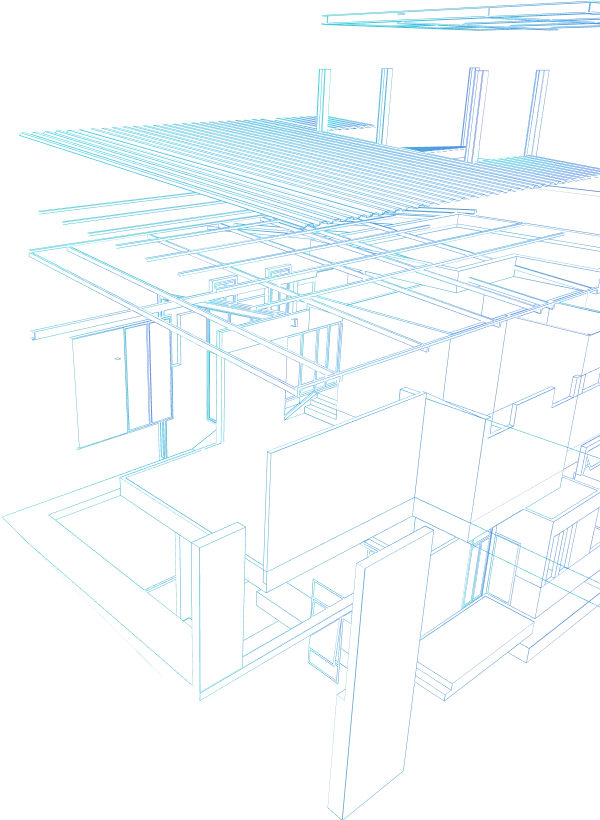After multiple successful exits in the healthcare industry, entrepreneur John LeRoy noticed something peculiar about real estate referrals: they were stuck in the past. Drawing from his 30-y...
How DrizzleX Advances Water Management Technology in Multi-Family Housing




Water has always been a central concern for Esther Altura. Growing up in Israel, she learned early on that conservation is not optional. That lesson stayed with her and now shapes the mission of DrizzleX, the water management technology company she co-founded and leads as CEO.
“In Israel, every kid grows up knowing that water is very important. Every drop counts,” Altura says.
For property owners managing apartment buildings, water presents a unique challenge: unlike electricity or gas, there’s typically no way to measure individual unit usage. With only a master meter for entire buildings, leaks go undetected, excessive usage remains unidentified, and costs can’t be fairly allocated to tenants.
“When I managed apartment buildings, I noticed that water was not really important. There was no way to really bill tenants because there was only one meter for the entire building,” Altura explains. “You don’t know if there are leaks. You don’t know who is using excessive water. You have no control over it.”
This lack of visibility costs property owners millions while wasting a precious resource. DrizzleX’s solution? Micro meters that attach directly to individual fixtures, providing unprecedented insights into water usage patterns and detecting leaks before they become expensive problems.
The Multi-Family Water Challenge
The problem stems from the physical infrastructure of multi-family buildings. Unlike single-family homes where water enters through one point with a dedicated meter, apartment buildings typically have a single master meter for the entire structure. The plumbing system uses vertical risers with pipes running horizontally through walls, making it physically impossible to install traditional meters for individual units.
Some properties use ratio utility billing systems (RUBS) that charge tenants based on apartment size or occupancy, but as Altura points out, “There’s significant tenant resistance. You might be conserving water, but you still pay for it because somebody else in the building is wasting water. And if there are leaks, the tenants pay for those leaks.”
Building the Solution
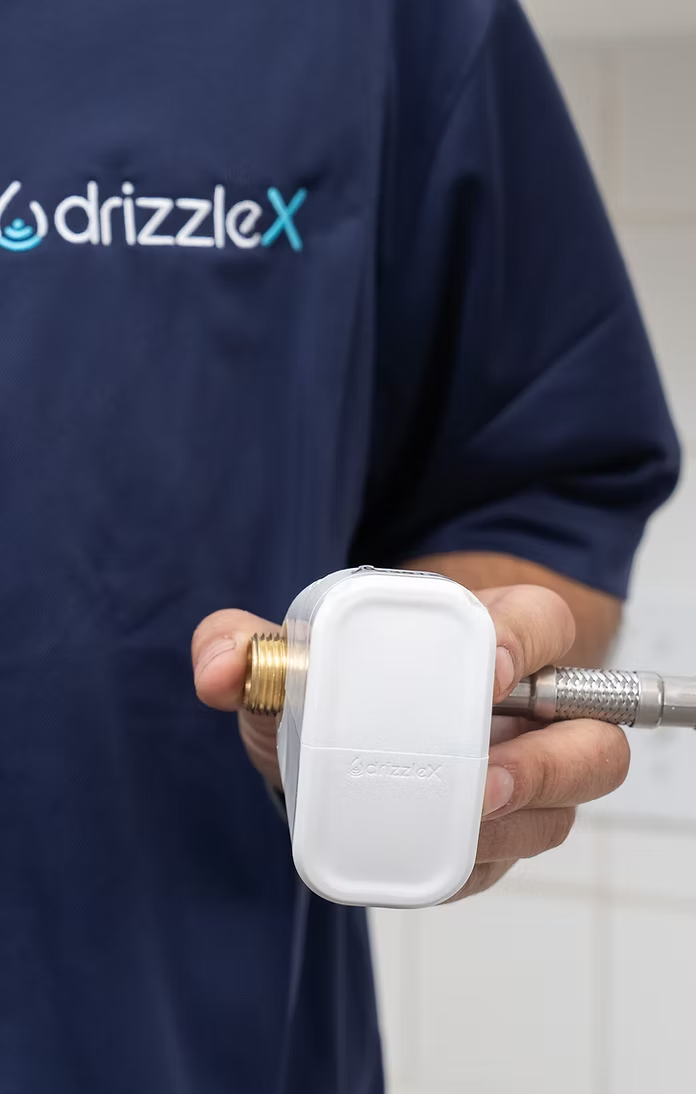

Altura’s background uniquely positioned her to tackle this problem. With professional experience in software engineering and AI at Kaiser Permanente, combined with her personal experience as a multi-family property investor, she understood both the technical and practical aspects of the challenge.
“For years, I tried to solve this issue, and there was really no technology available,” she recalls. “Then IoT (Internet of Things) came about.”
Working with her son, an industrial designer, Altura developed a “micro meter” small enough to attach to individual fixtures yet sophisticated enough to accurately measure water flow. These devices transmit data via IoT techniques to a gateway and then to the cloud, where DrizzleX’s software analyzes usage patterns and identifies anomalies.
The first prototype was tested in her son’s bathroom. “He was flushing the toilet, and I would tell him how much water it took. Getting this information on my telephone was really exciting,” Altura remembers.
Today, DrizzleX has amassed an impressive database of water usage patterns. “Right now, we have 225 million records of people using water. We can tell you how long a typical shower is, how long is a typical flush. We can even tell you how many people are in the apartment based on water usage.”
Delivering Actionable Intelligence
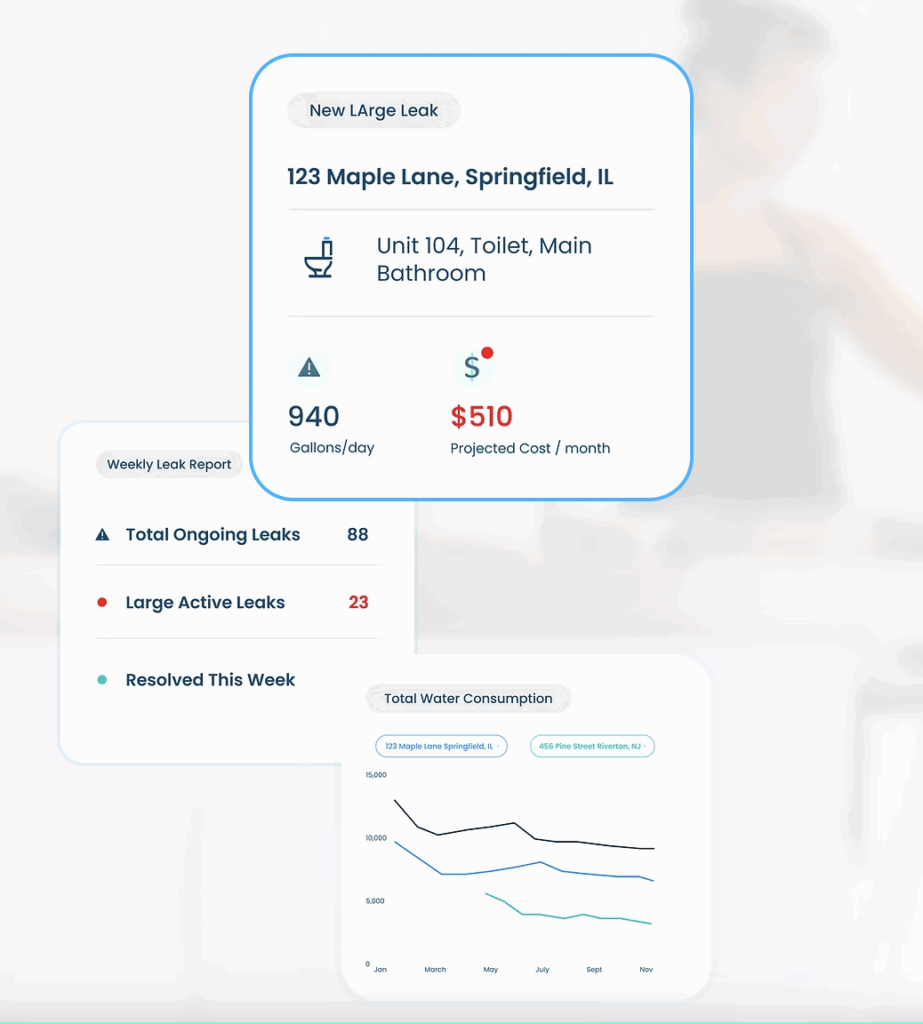

What sets DrizzleX apart isn’t just data collection but transforming that data into actionable intelligence for property managers. The system prioritizes alerts based on financial impact, distinguishing between minor leaks that might cost $25 a month and major issues that could cost thousands.
“We have an alert system, a notification system. Everything that’s exceptional gets an alert,” Altura explains. “When we discover a significant leak, the customer will get an immediate email telling them exactly where the leak is: in the main bathroom, in the toilet, or in the shower.”
This immediate notification is followed by daily summaries. “Every morning at seven o’clock, they get an email with all the active leaks that we reported in the last 24 hours and are still open,” says Altura. “Customers who have DrizzleX installed in most of their properties review this list every morning and send it to their maintenance people.”
This approach represents a dramatic improvement over traditional methods. “Until now, they would wait for the bill two months later, and then they would try to find out where the leak is because the bill is so high. It doesn’t happen anymore.”
Installation Challenges and Solutions
Implementing new technology in existing buildings presents significant challenges, especially in the conservative multi-family industry. DrizzleX faced additional hurdles launching during the COVID-19 pandemic when access to units was restricted.
The physical condition of plumbing systems posed another obstacle. “Seventy percent of pipes in Los Angeles are galvanized, and galvanized pipes are basically so fragile that if you touch them, they can fall apart,” Altura notes.
The company developed specialized installation techniques to address these challenges. “We never install on the pipes themselves. We install on the angle stop where it’s new stuff. Some of these stops are bad, and we have to replace them and close water to make sure it doesn’t leak.”
The devices are designed for longevity, with batteries that last ten years without replacement, a critical feature for a system that needs to operate continuously with minimal maintenance.
Impressive Results
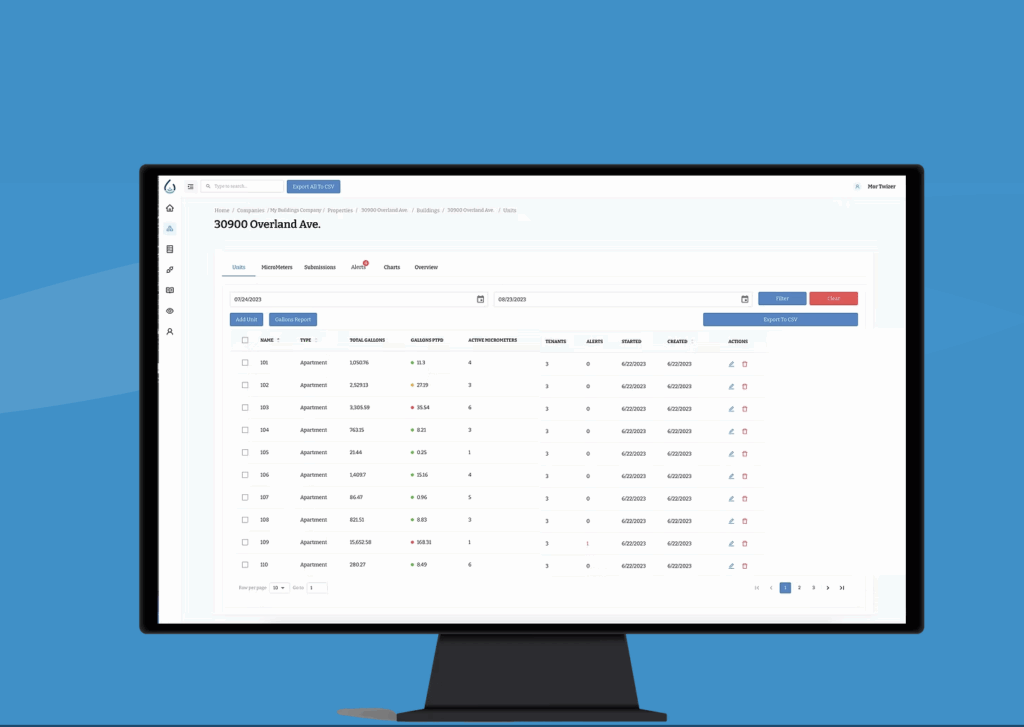

The impact of DrizzleX’s technology has been substantial. “Our customers save between 20 and 40% of their water bills. Some of them even save 50%,” Altura reports.
These savings challenge conventional wisdom about water waste. “The EPA says there is between 12 and 15% leaks. But I beg to differ. I think it’s much more,” says Altura, whose data supports this assertion.
One customer with 2,000 units is saving “three-quarters of a million dollars a year just by having us there and telling them with a leak alert,” according to Altura.
Data Insights: The Toilet Problem


With millions of data points collected, DrizzleX has identified some surprising patterns in water waste. The biggest culprit? Toilets.
“I can guarantee you that six months after you install a new toilet, it’s going to start leaking,” Altura states emphatically. “Toilets leak all the time. The way they are built, especially if you don’t buy high quantity, the flapper deteriorates. Today they have cost-saving or low-flush toilets, but over time, they become high-flush toilets.”
Some leaks are particularly difficult to detect through visual inspection. “Sometimes we call it intermittent leak. The toilet will leak slowly until it gets to a certain point, and then it will fill up again. When you tell the customer they have a leak there, they send a plumber, and the plumber looks at it and says, ‘No, I don’t see any leak.’ But our system says there’s a leak.”
Showers represent another significant source of waste. “People are changing the low-pressure shower heads to very strong shower heads. So instead of two and a half gallons per minute, it can be five or six gallons per minute, and showers take a third of the quantity of water at home.”
Market Adoption and Growth
DrizzleX has found particular success in affordable housing markets. “Low-income housing is a great market of ours,” Altura explains, “because a lot of time governments give contracts to companies, but they cannot charge for water.”
In states like Massachusetts, where ratio utility billing is prohibited, and in affordable housing where utilities are often included in the rent, property owners have a strong incentive to reduce water costs since they cannot pass them to tenants.
The company has experienced rapid growth, with approximately 60,000 units currently installed and plans to reach “a few hundred thousand in the next couple of years.” Their expansion has been primarily driven by customer satisfaction and word-of-mouth, as the team has been “so busy implementing that we don’t have enough time for marketing.”
Looking Forward
As DrizzleX continues to grow, they’re expanding both their customer base and their technological capabilities. The company is now working with major property owners with tens of thousands of units, including Related Companies, which came on board after a year-long pilot program.
Future developments include remote water shutoff capabilities. “We are talking about shutting water from afar. That’s something that we are working on. So if a toilet leaks, it can be shut from far until somebody comes to repair it,” Altura reveals.
For an industry that has historically lacked visibility into one of its major operating expenses, DrizzleX represents a significant advancement. By combining innovative hardware with sophisticated data analysis, the company is not only saving property owners millions of dollars but also conserving one of our most precious resources, one drop at a time.
Similar Articles
Explore similar articles from Our Team of Experts.


When Kasper Rune Sogaard looks at the property management software landscape, he sees an industry stuck in the past. As a former Amazon engineering manager who helped build the ingestion pip...


After three decades in design and construction, Michael Miller’s vision for revolutionizing property art displays began in an unexpected place – luxury retail. “I really lo...


“Tech is new for the sake of new. Real Estate is old for the sake of old,” observes Marc Zuluaga, co-founder and Chief Revenue Officer of Cadence OneFive. This tension between in...
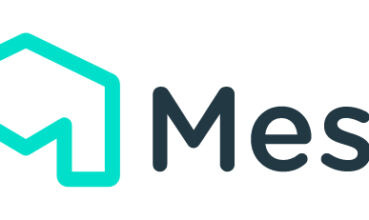

As the costs of home ownership consume an ever-larger share of American incomes, one fintech startup is pioneering a bold solution: a groundbreaking credit card that finally makes homeowners...




